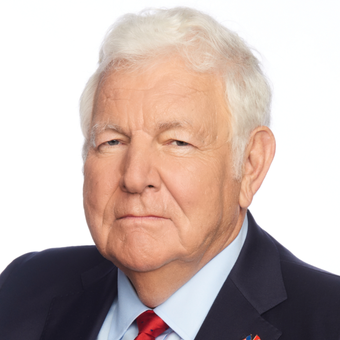Former Education secretaries on challenges of distance learning
Reaction and analysis from former Reagan Education Sec. Bill Bennett and former Obama Education Sec. Arne Duncan.
H.G. Wells once said, "Human history becomes more and more a race between education and catastrophe." Closing our schools, out of fear of COVID-19, was just such a catastrophe.
As more and more fear of the coronavirus was spreading throughout March, schools started to close — indefinitely. And by the middle of March, half of America’s nearly 57 million elementary and secondary students had their daily and routine educational and social life turned upside down. Schools were closed, and, in short order, all of our nation’s children were furloughed.
It was perhaps understandable that at the beginning of the outbreak, with predictions of millions dead, we quickly and immediately put a pause on our nation’s schools. But as the evidence became clearer that children were far more affected by other and worse problems for them than the coronavirus, the schools should have opened up.
The closings have caused, and will cause, even more social damage for a great many of these children and their parents than the coronavirus ever would. All to protect children from a disease that will not directly affect them.
MITCHELL BARD: WORLD HEALTH ORGANIZATION LIES ABOUT ISRAEL ON CORONAVIRUS AND OTHER HEALTH ISSUES
As of right now, fewer than 20 children have died from COVID-19 nationwide. In New York City, that number is six, each with underlying conditions. By contrast over 80 children nationwide have died from influenza.
Yes, children can be carriers and transmitters of the coronavirus, but that was and is true of the flu as well — and it is increasingly apparent that children not only are more severely affected by the flu than the coronavirus, but they can transmit it more easily as well. And we never closed the schools down because of the flu.
As one study from the British Medical Journal put it, "children have not played a substantive role in the intra-household transmission [of coronavirus]." Or, as Daniel Koch, the chief of infectious disease prevention for Switzerland, put it even more directly, "Young children are not infected and do not transmit the virus."
CLICK HERE TO SIGN UP FOR OUR OPINION NEWSLETTER
Because of the scare, we have radically upended our children's educational and social lives. As former New York Times reporter Alex Berenson put it, "The idea that we are denying children an education and in some cases, we're sticking children at home with abusive or drug-using parents, and they can't be seen by any other adults right now … is disgusting to me because children are not at risk here."
More from Opinion
It is unclear how much of our children’s educational lives have been disrupted, but a minimum of two months has just been taken from them and their parents. As schools are still debating when and if they can re-open, or re-open for summer school or the fall, it may be much more than that.
The standard argument that social policy is often deployed or changed "to protect our children" has been turned on its head; adults have engaged in some of the most dramatic social policy change in our history for something that will not harm children, while their solutions will. Their educational deficits may be the least of it.
Schools and after-school programs and sports, after all, are not just the center of our children’s educational and social lives, they are often the place — and sometimes the only place — where many children receive nutritional meals, have strong adult presences, and are safe from harmful drugs and adults. For those children who are in functional homes, parents — already taxed from work and other coronavirus policy stresses — are taking on added responsibilities and work. This radical decision to close schools will not end well for too many children and adults.
Interestingly, during this odd period, some unexpected questions are getting answered as some great things and some not-so-great things about our education system are revealing themselves.
We are seeing inspiring and exemplary stories of teachers, principals, and even superintendents stepping up and rolling up their sleeves to chip in and interact more with their charges. But we're also seeing not so encouraging positions being taken by teacher unions and organizations. They are making more and more demands, of course asking for much more money, but also seeking to limit teacher instructional time to three hours a day and not requiring teachers to conduct live classes using video and social media platforms.
Some are stating schools should not re-open unless all students and staff are tested, and temperatures taken on a daily basis. Others are arguing that remote learning "may be the new normal." These requirements are unreasonable and unrealistic.
CLICK HERE TO GET THE FOX NEWS APP
In light of the above, we should not expect help from an all-too-often primarily self-interested education establishment. We are learning that some parents are getting meager assistance and will not be able to count on much more than that. Certainly, others in these times have collaborated well and productively with eager teachers and school systems. And yet a third group of committed and sensible parents and students have learned what homeschoolers have known for years: they can do very well on their own and with other parents and choices, thank you very much.
But for all our children, whatever their circumstances, the race between education and catastrophe should not end for the 2020 school year with catastrophe winning.
CLICK HERE TO READ MORE BY BILL BENNETT
Seth Leibsohn is a senior fellow at the Claremont Institute and the host of "The Seth Leibsohn Show," heard daily on 960am/KKNT in Phoenix, Ariz.

